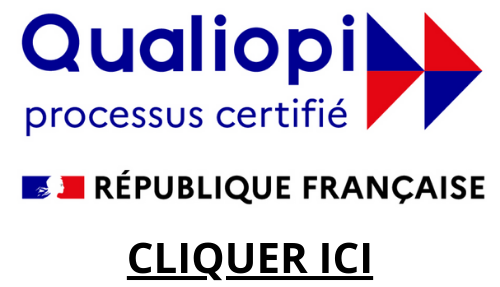To determine goodwill, one must assess the purchase price of the target firm, and find the difference between this value and the fair market value of the target firm, its assets and all liabilities incurred. The fair market value of a market firm can be gotten from an appraisal or a valuation. Firms must amortize the value of the asset over this estimated life span. Firms must periodically test the value of intangible assets that are amortized for impairment following a procedure similar to that used for goodwill. The test compares the “carrying value” (i.e., value as shown on the firm’s financial statements) to the fair value of the intangible asset and requires recognition of an impairment loss whenever the carrying value exceeds the fair value. A seller sometimes sells his business at lower than its original price due to many circumstances this leads to the creation of negative goodwill in the books of accounts of seller.
Is negative goodwill recognized in profit or loss?
According to Financial Reporting Standard 10, negative goodwill should be recognized and separately disclosed on the balance sheet, immediately below the goodwill heading. It should be recognized in the profit and loss account in the periods in which the non-monetary assets acquired are depreciated or sold.
The effect that debt may have on the analysis will be dependent on the valuation approach selected. This potential is considered an asset that can be leveraged to generate income for the company. Goodwill is most commonly created when one company purchases another for more than its book value. The premium paid beyond the company’s book value is recognized as goodwill.
Table of Contents
I generally follow the alternative approach to present negative goodwill under the head of intangible assets but you can follow any method you are comfortable with since both are acceptable in the industry. Negative goodwill can be avoided by conducting a thorough due diligence and valuation of the target company before making an offer. The buyer should also consider the market conditions, industry trends, and strategic objectives of the merger or acquisition, and adjust the purchase price accordingly. The buyer should also communicate clearly and transparently with the target company, regulators, auditors, and investors about the rationale and benefits of the deal, and address any concerns or doubts that may arise.
Examples of separable intangible assets include patents and customer lists. Intangible assets also are viewed as identifiable if they are contractually or legally binding. An example of a contractually binding intangible asset would the purchase of a firm that has a leased manufacturing facility whose cost is less than the current cost of a comparable lease. The difference would be listed as an intangible asset on the consolidated balance sheet of the acquiring firm. Negative goodwill is also commonly referred to as bargain purchase and is generally favourable to the acquiring company.
Please Sign in to set this content as a favorite.
Assume that Acquirer Inc. purchases Target Inc. on December 31, 2009 (the acquisition date) for $500 million. Identifiable acquired assets and assumed liabilities are shown at their fair value on the acquisition date. The excess of the purchase price over the fair value of net acquired assets is shown as goodwill. The fair value of the “reporting unit” (i.e., Target Inc.) is determined annually to ensure that its fair value exceeds its carrying value.
If the original business combination is not restated, it is not necessary to change the amortisation period on first time adoption. The option to carry goodwill forward indefinitely, subject to an annual impairment review is no longer available under UK GAAP. The fair values of the costs incurred to acquire the business are measured. There are two areas in this that remain unchanged from current UK GAAP, but are different from the treatment under IFRS. A business combination remains the acquisition of an identifiable business.
Calculating Goodwill
For example, assume that Calter Ltd. purchased Turnton Inc. and identified it as a reporting unit (CGU). The goodwill amount that was recorded at acquisition was $40,000 and the carrying amount of the whole unit, including goodwill was $360,000. One year later, due to an economic downturn in that industry sector, management is assessing whether the unit has incurred an impairment of its net identifiable assets.
The revised goodwill impairment model does not change the sequencing of impairment testing for assets (or asset groups) held and used or held for sale. As with the existing model, getting the sequencing right can help avoid potential errors in assessing impairment. For example, for assets that are held and used, other assets (e.g. inventory, financial assets, etc.) and long-lived assets are assessed for impairment prior to testing goodwill. These complexities will be important for management and stakeholders to understand when adopting and applying the revised guidance. When the value of an asset declines, it must be recorded as an expense in the company’s income statement. Despite this, it is generally accepted that goodwill is capitalized.
Need for Goodwill Calculation
Goodwill must be monitored continuously, as its value is likely to decrease over time. Companies must also remember to carry out an impairment test every year to make sure that goodwill is appropriately recorded. Therefore, proper treatment of positive goodwill requires amortizing it over the expected beneficial life of the asset. Acquiring another firm may lead to opportunities for increased efficiency and cost savings, which can be seen as goodwill. The acquired company may have established a strong brand name in the industry which could be useful to the purchaser in their own operations. This goodwill is not subject to amortization, as it is viewed as an external asset that helps to bring value to the company’s future investments.
3 Benefits Brands Gain by Prioritizing Product Content – Destination CRM
3 Benefits Brands Gain by Prioritizing Product Content.
Posted: Tue, 27 Jun 2023 04:00:00 GMT [source]
Under IFRS, impairment losses on goodwill also cannot be reversed, but impairment losses on intangible assets other than goodwill can be reversed. Goodwill is value that is created when a company purchases assets from another company hr webinars on demand for more than the fair value of the company’s net identifiable assets. As you can see in the visual below, the FMV of the net identifiable assets was only $4 million, but Vesla paid $5 million, which created goodwill of $1 million.
Negative goodwill should be recorded as income on the purchasing company’s balance sheet. Although they can’t easily be calculated, intangible assets significantly contribute to a company’s success and value. Though it sounds bad, “negative goodwill” is actually a good thing for a business owner, because it means your company has bought another business for less than that company’s fair market value. It’s called negative goodwill because it’s the inverse of the more common accounting term « goodwill. » Negative goodwill can be leveraged by using it as an opportunity to create value for the buyer and the target company.
- Goodwill is a type of intangible asset related to the acquisition of one business by another.
- The buyer should use the excess cash generated by the negative goodwill to invest in growth initiatives, innovation, or debt reduction.
- Goodwill is recorded on a company’s balance sheet as an asset and is not amortized.
- For IFRS, if the carrying value of the CGU is greater than the recoverable amount (which is the higher of the CGU’s value in use or fair value less costs to sell) then this difference is the impairment amount.
- Usually, goodwill is an asset and is a part of the asset section in the balance sheet but in case of negative goodwill, it gets treated as an liability which will be reduced from the value of assets transferred.
- Intangible assets may be carried at fair value, but as under FRS 10 this can only occur if there is an active market to establish that value.
TECH 01/08 includes specific consideration of issues relating to deferred tax, goodwill, asset exchanges, hedging transactions and foreign exchange profits and losses. A provision for deferred tax should generally be regarded as a realised loss, except that deferred tax relating to an unrealised gain on a revalued asset should be treated as a reduction of that gain. Negative goodwill credited directly to reserves under SSAP 22 similarly becomes a realised profit on the same basis as if it had been accounted for under FRS 10.
Can you have negative goodwill on a balance sheet?
In the balance sheet of the selling company, goodwill is recorded as an asset, whereas negative goodwill is part of the liabilities since it reduces the valuation.

 Actions de formation ; actions de formation par apprentissage
Actions de formation ; actions de formation par apprentissage 